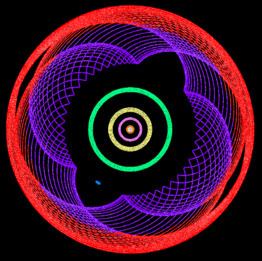Discovery date 9 October 2002 Minor planet category SDO2:5 resonance Aphelion 71.552 AU (10.7040 Tm) Inclination 35.107° Orbits Sun | MPC designation (84522) 2002 TC302 Observation arc 5574 days (15.26 yr) Discovered 9 October 2002 Argument of perihelion 87.142° | |
 | ||
Discovered by M. E. Brown,C. A. Trujillo,D. L. Rabinowitz(?) Similar Michael E Brown discoveries, Other celestial objects | ||
84522 2002 tc302
(84522) 2002 TC302 is a red 2:5 resonant trans-Neptunian object (TNO) discovered on October 9, 2002 by Mike Brown's team at the Palomar Observatory.
Contents
Physical characteristics
(84522) 2002 TC302 has an absolute magnitude (H) of 3.78. It has an estimated diameter of 7005584100000000000♠584.1+105.6
−88.0 km. Using the Spitzer Space Telescope, it was previously estimated to have a diameter of 7006114500000000000♠1145+337
−325 km, which would have made it one of the largest possible dwarf planets. This overestimation was due to insufficient motion to allow for a good sky subtraction and because it was very close to a brighter background object. Brown noted that the Spitzer measurement involved a very large potential error and that the object would likely be smaller, making its chances of it being a dwarf planet "likely" rather than "near certainty", in his opinion.
It was predicted that on 30 November 2013, (84522) 2002 TC302 might occult a star for slightly less than a minute. However, the possibility to observe this occultation was judged as small. The precise duration that a Solar System object occults a star provides a precise way to determine its diameter, if observed from multiple locations.
The red spectra suggests that (84522) 2002 TC302 has very little fresh ice on its surface.
Its rotational period is most likely 5.41 h, and it has a light-curve amplitude of 6998400000000000000♠0.04±0.01 mag.
Orbit
(84522) 2002 TC302 will come to perihelion in 2058. Its perihelion (minimum distance from the Sun) of 39.1 AU is about the same as Pluto's semi-major axis (average distance from the Sun). It is classified as a scattered disc object.
Given the long orbit that TNOs have around the Sun, (84522) 2002 TC302 comes to opposition in late October of each year at an apparent magnitude of 20.5.
Resonance
Both the Minor Planet Center (MPC) and the Deep Ecliptic Survey (DES) show this probable dwarf planet to be in a 2:5 resonance with Neptune. Due to the resonance, it completes two orbits for every five orbits of Neptune.
As of 2009, it is the largest likely dwarf planet that is known to be in a non-plutino resonance with Neptune. Plutinos are objects in 2:3 mean-motion resonance with Neptune. For every two orbits that a plutino makes, Neptune makes three.
Precovery
It has been observed 76 times over nine years.
